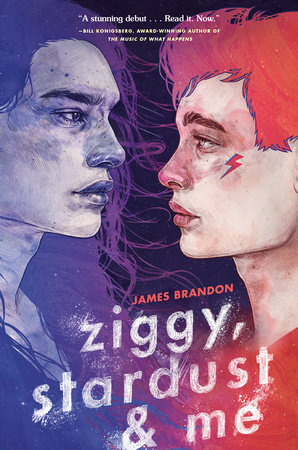Pride is Much More Than a Month
by James Brandon
In 1969, queer people created a safe community “underground” as they tried to shield themselves from police harassment and brutality. Bar raids were a regular occurrence, and if you were caught without proper identification or wearing even one piece of clothing that didn’t match the gender you were born as, you were arrested — if not worse.
The Stonewall Inn was a regular host to these contentious police raids. But one balmy night in June, everything changed. Instead of succumbing to police assault, trans, POC, and other marginalized queers resisted and fought back.
The Stonewall Riots lasted for days, and culminated in what many consider to be the event that forever changed the Gay Liberation Movement and defined our fight for equality today. But it wasn’t the first time trans and POC queers resisted. A few years earlier, San Francisco’s marginalized queer community rioted at Compton’s Cafeteria after a routine police raid, and in 1959, one of the first recorded uprisings in LGBTQIA+ history took place when trans, lesbians, and gay men fought back after police harassed them at the 24-hour Cooper Do-nuts in Los Angeles.

Gay equality activist Barbara Gittings picketing Independence Hall in 1965. Photo credit: Wikipedia
Our LGBTQIA+ history is rife with resistance, and this stems from an ancestral lineage of queer humans being oppressed by a white patriarchal society. Although we’ve come a long way since those riots in 1969, the shame our community feels is still very real. And this is why we come together to celebrate Pride.
One year following the Stonewall Riots, and to commemorate the uprising, the first Pride marches were organized in Chicago, Los Angeles, San Francisco, and New York. Since then, the seeds of those marches have blossomed into full-blown parades in cities across the world, and June is now internationally recognized as Pride Month. It’s an important time to come together in community — both for LGBTQIA+ people and their allies — to celebrate an outward expression of joy and love. And whether it’s trendy or not to see corporations wave their rainbow-tinted logos for 30 days, it’s still a beautiful reminder of how far we’ve come in our community’s struggle for equal rights.
Two years after the first Pride marches, another victory for the Gay Liberation Movement occurred: the American Psychological Association (APA) officially removed homosexuality from the Diagnostic and Statistical Manual of Mental Disorders. Simply put: if you identified as queer, for the first time in recorded history, you were considered “normal.” This life-altering decision is considered by some to be the actual birth of the modern LGBTQIA+ movement, and this moment in time became the seed for my young adult novel, Ziggy, Stardust and Me.
Set in 1973 St. Louis, the story follows 16-year-old Jonathan who is forced into treatments to cure his “illness.” When he meets Web, and the two boys fall in love, they struggle to retain their identities in a world that continually threatens to tear them apart. Jonathan’s journey from shame to self-acceptance is long, rigorous, and seemingly insurmountable; but the emotional catalyst he endures is rooted in the origins of Pride marches.
I’ve witnessed many Prides in cities across the nation, but it wasn’t until I walked in my first parade last year, supporting my Bay Area American Indian Two-Spirit friends, did I understand the full magnitude of why we march. As I walked those several blocks alongside my friends, throngs of supporters on both sides of the parade route were smiling, laughing, and cheering us onward. And some of the shame I’d felt growing up in a world that told me I couldn’t be me was suddenly washed away by this enormous wave of love.

What I felt in that moment was a deeper connection to our LGBTQIA+ history, a deeper appreciation for those pioneers who’ve paved the way, and a deeper respect for those who are still silenced by fear.
Although Pride Month is a time of celebration, it is also a time of reflection — a time to remember our origins in uprisings. Embracing our LGBTQIA+ history, and feeling rooted in a society that has often pushed us aside, can have everlasting side effects on a young person’s wellbeing. To actually know your people were an integral part of humanity, to learn about similar struggles you’ve shared or fights you’ve fought, and to see yourself in others who have come before you can help you navigate a time of questioning with a sense of belonging rather than separateness.
This is why I became a young adult novelist — to not only document these moments in our history, but to facilitate a deeper connection to self. Because Pride is much more than one month for us; it’s an entire life.
James Brandon’s young adult novel, Ziggy, Stardust and Me, debuts on August 6, 2019 from Putnam/Penguin Random House.

